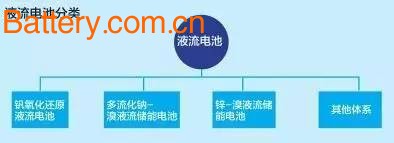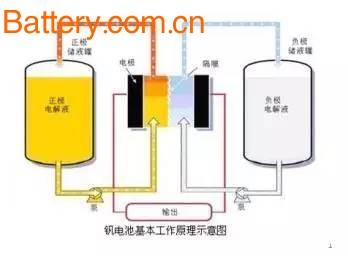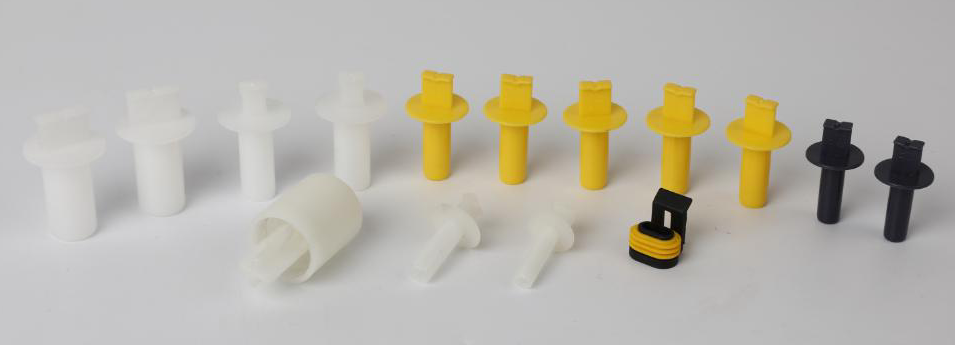The sprint is 0-100km/h in 2.4s, the maximum speed is 300km/h, and the maximum mileage is 1000km. Recently, a message about the super-performance flow battery coupe concept car began to spread on the network, and the flow battery has once again received attention. However, the reporter found through investigation and interview that at present, the flow battery functions as a power battery, and the possibility of application in the automobile field is very small. The flow battery is more widely used in the field of large-scale energy storage, and it is still out of the car. "At present, there is no such flow battery, and it is difficult to appear in the short term." Director of the National Key Laboratory of Energy Flow and Energy Storage Battery Technology, Energy Development Bureau of the National Development and Reform Commission, and Director of the Research Institute of Energy Storage Technology, Dalian Institute of Chemical Physics, Chinese Academy of Sciences Zhang Huamin said that the energy density of the flow battery is relatively low, roughly equivalent to 1/5 of the energy density of the lithium-ion battery , and it is almost impossible to achieve the role of a power battery. Low energy density Zhang Huamin analyzed the reporter's analysis that the active material of the lithium ion battery is enclosed inside the battery core. If too much active material, the electrode will become thicker, affecting mass transfer efficiency, and the energy storage capacity is limited. In contrast, the flow battery, especially the all-vanadium flow battery energy storage active material outside the stack, is suitable for large-scale, large-capacity energy storage, it is not suitable for the power battery field, mainly because of its The energy density is relatively low, and the so-called organic active material system flow battery may be easily oxidized, and its stability is not yet determined. Liu Yanlong, secretary general of the China Chemical and Physical Power Industry Association, also said that the flow battery is used in automobiles, and the possibility of using the power battery is very small. Because the specific energy of the flow battery is low, there is still a big gap with the lithium battery . However, the flow battery has higher safety performance and is more used in large-scale energy storage. The main application type is all-vanadium flow battery. The flow battery is a new type of large-scale electrochemical energy storage device. It is a high-performance battery that uses the positive and negative electrolytes to separate and recycle each other. It is a new energy product. The electrolyte of the flow battery is placed outside the stack, and the circulating electrolyte is used to flow the electrolyte through the stack, and the two react electrochemically, thereby realizing the conversion of chemical energy and electrical energy and the storage and release of electrical energy. According to the different active substances, the flow battery can be divided into various types such as vanadium, zinc/bromine, sodium polysulfide/bromine, and iron/chromium. At present, the application condition is better all-vanadium flow battery, and the positive and negative electrodes are all made of vanadium material. The reporter learned that the basic structure of the all-vanadium redox flow battery is a cavity (positive and negative) separated by a membrane that selectively conducts hydrogen ions, and each side of the cavity has a solid electrode. The vanadium ions of different valence states added on both sides of the cavity are chemically reacted to generate electric energy, and then the electric energy is output to an external circuit through the electrode, and the reaction process is reversed when the all-vanadium flow battery is charged. Zhang Huamin also pointed out that the biggest weakness of the flow battery is that the solubility of the active substance in the aqueous solution is limited, and the energy density of the battery is low, which is suitable for large fixed energy storage power stations. Domestically, the specific application fields of flow batteries are mainly microgrids, large-scale wind farms, solar power stations, applied to distributed generation, power grid peaking, etc.; regional distribution, mainly in areas where renewable energy is concentrated, For example, Liaoning, Qinghai, Beijing, and some areas in the west. High energy storage value Large-scale battery energy storage technology needs to meet the basic conditions of high safety, cost-effective life cycle, good economy, low environmental load during life cycle, and environmental friendliness. As a representative of flow battery applications, all vanadium redox flow batteries carry the characteristics and advantages of flow battery products. The flow battery has a long service life and is safer. Among them, the electrolyte of the all-vanadium flow battery circulates in the battery and brings out part of the heat, which makes the battery itself not heat. In contrast, lithium-ion batteries are prone to uncontrollable chemical reactions, such as combustion, after heating. Zhang Huamin said that the flow battery energy storage technology is one of the first choice technologies for large-scale and high-efficiency energy storage. It has the advantages of high energy conversion efficiency, large storage capacity, free site selection, deep discharge, safety and environmental protection. Among many flow batteries, all-vanadium flow battery energy storage technology is the most widely used liquid battery energy storage technology. It has many advantages, such as safe and reliable operation, recyclability, low environmental load during the life cycle, and environment. Friendly, cost-effective life cycle (charge and discharge cycle times more than 15,000 times, the number of years of use is 15 to 20 years), with strong overload capacity and deep discharge capacity. According to relevant reports, some foreign experts have achieved the cost of a flow battery of $100/kWh. However, according to Zhang Huamin, this algorithm is only a calculation of the electrolyte cost used in the flow battery, which is not reasonable. "In the future, the life cycle of the flow battery will be cheaper than any other type of battery." Zhang Huamin believes that compared with the research and development history of lithium batteries for more than 20 years and the country's large-scale research and development investment, the research of flow battery is roughly from 2000. At the beginning, R&D capital investment is relatively small. There is also a significant room for the cost of the flow battery. Zhang Huamin introduced: "In 2013, the flow battery system we sold was about 7,000 yuan / kWh, and today's price is around 3,500 yuan / kWh. There will still be a lot of room for future decline." Current battery cost generally do not cover the cost of recycling, for example, lithium batteries sound recycling process still requires a lot of capital investment. The flow battery is not the same, its recovery residual value is relatively high, and its cost accounts for 50% of the energy storage system. The vanadium electrolyte can be semi-permanently recycled. At present, large-scale energy storage is increasingly being valued by the state, and specific industrial policies are also being introduced. Although flow battery technology has a good application prospect in the field of large-scale energy storage technology, in terms of the status quo, it also needs state-related industrial policy support, commercial operation and profit model also need to be through relevant demonstration application projects. Explore and improve. Wind power generation, photovoltaic cells, and electric vehicles have all developed in this way. Zhang Huamin believes: "From the perspective of reliability and stability, at present, the entire flow battery industry has entered the stage of commercial operation, and then through technological advancement, further improve its performance and reliability, and reduce costs." According to Zhang Huamin's analysis, with the support of national policies and R&D funds, the development trend of the flow battery industry will gradually improve. At present, the total installed capacity of domestic chemical energy storage projects is about 100 megawatts. Among the entire energy storage capacity, liquid battery accounts for 10%-20%. In the next two or three years, this proportion may reach 40%-50%.
The tube assembly needs to be installed with end plugs to prevent dust and other objects from entering the quick connector and causing the connector to be blocked.
Quick Connect Protection Caps , Quick Connect End Plug ,Quick Connect Dust Cover,Quick Connect Dust Caps Linhai Shinyfly Auto Parts Co.,Ltd. , https://www.chinashinyfly.com


